Authenticity and the Role of AI in Research Publications and Citation Metrics: A Critical Examination (2025)

AI has jumped from sci-fi stories straight into our day-to-day world, and university labs are no exception. Whether it’s speeding up data crunching, spotting patterns we might miss, or even helping researchers polish the wording of a grant application, artificial intelligence now feels like a standard tool in the academic toolbox. While that convenience is hard to knock, it also raises important questions about what happens when the algorithms take centre stage. Are we genuinely speeding up scientific discovery, or are we opening the door to new problems around trust and transparency? In this post, we’ll unpack those worries by looking at the many ways AI is already shaping research papers, peer reviews, and citation scores.
The Illusion of Authenticity: When AI Writes Science
Academic research is built on a simple idea: work should be genuine. Scholars want their papers to reflect their own thoughts, discoveries, and methods. That feeling of originality is what makes science exciting and trustworthy. Yet tools like GPT-4 can spin out long paragraphs that sound correct, smooth, and even fresh. Because of this polish, researchers are starting to wonder how real their own work can be when an algorithm can do much of the same.
AI as a Ghostwriter: What It Means for Researchers
Up until now, researchers have turned to artificial intelligence mostly for simple tasks. Think spell checks, grammar fixes, or swapping out a clunky phrase for something cleaner. Lately, though, more scholars are asking AI tools to draft entire paragraphs or even complete sections of their papers. That shift is beginning to test old rules about who can call themselves an author and what counts as a real intellectual contribution.
Whose Idea Is It, Anyway? If the AI comes up with a research question, summarizes background studies, or suggests how to interpret a set of data, can the human writer honestly say the work is all theirs? Most academic journals still say you can’t list a machine as an author because it doesn’t think or feel. The problem is that few have spelled out how to credit the parts that a machine actually wrote. Researchers are left guessing whether to list the tool in a footnote, keep quiet, or treat it like any co-author they’ve ever worked with.
The Transparency Problem: Many scientists simply don’t mention that they’ve leaned on AI when they submit a manuscript. When peer reviewers read the paper, they assume every word came from a fellow person, not an algorithm. That illusion makes it hard for reviewers to judge originality, check for bias, or evaluate the research fairly. It’s like handing in a painting signed by a master, while secretly using a robot to mix the colours. Readers deserve to know how the final picture was put together.
Plagiarism Risk: AI is trained on mountains of existing studies, books, and web pages. Because of that, it can accidentally spit out sentences that look a lot like someone else’s work, only slightly reworded. If a researcher copies those lines into their paper without a proper citation, they might end up in hot water for plagiarism, even if they didn’t mean to. Protecting intellectual honesty, then, isn’t just about careful editing; it’s about double-checking that the machine didn’t carry the blame for something it was never supposed to own.
As tools get smarter, the rules of the game will need to change. Until then, honesty and clear disclosures will be the safest way forward.
Who Takes the Blame When AI Goes Wrong?
We all appreciate the speed and creativity that artificial intelligence brings to writing. Papers that once took weeks to draft can now be sketched out in minutes. Yet this new power comes with a tricky question: when something goes wrong—whether it’s a misleading statistic, a hidden bias, or outright made-up information—who is actually responsible?
Right now, most editors expect the name on the by-line to take the heat, which usually means the researcher who pressed “generate.” But things aren’t that simple. The programmer who built the AI, the institution that licensed it, and even the journal that published the work all play a part in the story chain. Because of that, assigning blame or, more important, fixing the problem becomes a muddled process. Until we sort out these lines of accountability, researchers will be walking a tightrope every time they use a language model to draft a paragraph.
Peer Review Under Pressure
Peer review has always been seen as the moat protecting serious science from careless errors and extravagant claims. Sadly, most reviewers still check their inboxes armed with little more than their own judgment and a gut feeling when they suspect a line was generated by an AI. As artificial intelligence settles into research labs, a few headaches are coming to the surface fast:
Quality slips: Machine-written paragraphs sparkle on the surface, yet underneath there is often a disappointing lack of real data or fresh ideas. That shiny exterior can trick editors and allow second-rate papers to sneak past the usual safety nets.
More on the plate: Reviewers now have to squeeze an extra task into their cramped schedules deciding whether a specific sentence was cooked up by a chatbot or jotted down by a colleague and doing that while still hunting for errors in files, methods, and calculations.
Until every journal keeps a dependable AI detector next to the coffee machine and every policy is crystal clear about when authors must admit they got help from a model, the trustworthiness of papers that lean on AI will feel just a touch unsteady.
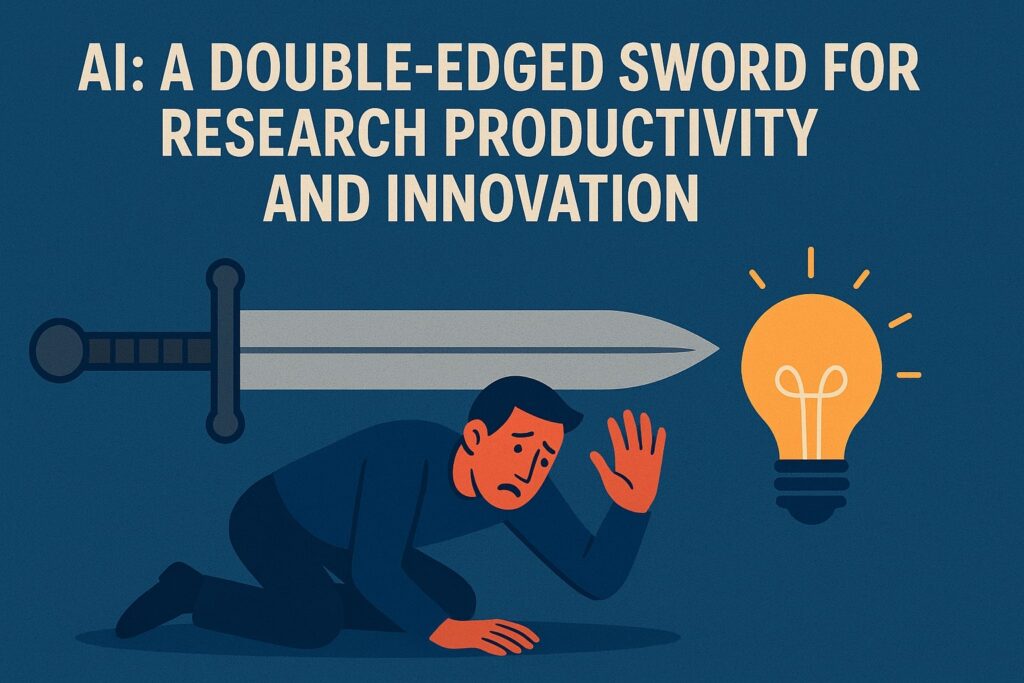
A I : A Double-Edged Sword for Research Productivity and Innovation
When you chat with researchers today, AI tends to come up almost right away. They rave about how much time it frees up from skimming through piles of papers for a quick literature review to brainstorming fresh ideas for an experiment. Even drafting a methods section or polishing a discussion paragraph suddenly feels less like a slog. The number of hours saved can be eye-opening. Yet no tool, no matter how shiny, is without its risks, and academics should keep their eyes open.
The Bright Side: Speed and Scale
Let’s start with the bright side of using AI in research.
Literature Review: Picture this: you need to read a mountain of studies to figure out what’s already been said. In the past, that meant days hunched over a laptop. Now, an AI can scan thousands of papers in a few minutes, highlight important quotes, and even show you trends that you might not have noticed at first glance. Suddenly, your background reading feels manageable.
Data Analysis: Messy spreadsheets are the nightmare of almost every researcher. Machine-learning tools, however, thrive in that chaos. They sift through the data, uncover tricky patterns, and generate predictions far faster than a small team of statisticians could do on paper. What once required long meetings and dry-erase brainstorming now happens in an afternoon.
Writing Help: After the numbers are crunched, you still have to explain them. AI doesn’t steal your job; it speeds up the boring parts. It can draft an abstract, rephrase a sentence, or tighten a methods section almost instantly. That gives you extra time to focus on whether the argument you’re making really makes sense. In research, clarity matters, and that little bit of polish can go a long way.
The Dark Side: Passive Consumption and Intellectual Stagnation
Modern research tools are wonderfully handy, yet they aren’t without hidden catch that can trip up even seasoned academics.
Reduced Curiosity: When scholars lean too much on AI-generated summaries or ready-made paragraphs, they risk becoming passive readers who simply hit “accept” rather than wrestling with the argument by hand. Clicking a button feels quicker, but over time it dulls the sharp questioning that drives real discovery.
Echo Chamber Effect: Because AIs learn from past articles and existing datasets, they can serve up yesterday’s assumptions all over again instead of pushing us toward fresh ideas. Instead of smashing old walls, the algorithms politely paint them new colours we mistake for progress.
Reduced Innovation: Pattern matchers are great at spotting trends that already exist, but they are not so good at imagining what could be. The more researchers ride AI’s cozy comfort, the less incentive they have to chase unusual, high-risk questions that might lead to real breakthroughs.
The Human–AI Partnership: Perfect in Theory, Tough in Practice
The best-case picture is one where artificial intelligence boosts our creative spark and calls on our skilful judgement instead of pushing us aside. For that to happen, though, people working with AI have to stay directly involved and question what the system spits out. Right now, that hands-on, critical habit is still not second nature for everyone in the research world.
Citation Metrics in the Age of AI: Opportunity and Threat
Names like h-index, impact factor, and plain old citation count carry a lot of weight when it comes to measuring how good a piece of research really is. Lately, though, artificial intelligence has started to nudge those numbers, and the results are both thrilling and a little scary.
AI as an Unofficial Research Assistant
Thanks to its speed and brute computing power, AI can sift through mountains of citation data and spot patterns human eyes might miss. That talent brings several clear benefits:
Faster paper hunting: Researchers can dive straight to the studies that matter and watch whole fields shift in real time.
Red flags on display: Algorithms can raise a hand when they see “citation rings” that awkward game of mutual back-patting or when self-citations blow up in a way that feels fishy.
AI as a Double-Agent
Yet the same technology that flags shady behaviour can, in the wrong hands, turn into a new kind of cheat sheet.
Artificial citation farms: Some teams now use AI to sprinkle references around in a way that looks stately but really bumps up their impact factor and h-index by sheer volume.
Trend-chasing over thinking: Because numbers matter for grants and jobs, there’s fresh encouragement to chase the latest hot topic rather than dig into tougher, longer-lasting questions.
Biased bibliometrics: When machines start driving which papers get noticed, the scoreboard suddenly favours big names and familiar labs while side lining curious, cross-disciplinary work that deserves a spotlight.
We’re living in an exciting research moment, yet those citation dials are talking back in unexpected ways. Balancing the promise of AI with honest scholarly values will be one of the trickier homework problems we tackle next.
The Danger of Chasing Metrics
When bibliometrics go hand-in-hand with AI tools, we run the risk of becoming even more obsessed with numbers in academic work. Sure, tallies like citation counts, impact factors, and h-indexes look tidy on a spreadsheet, but they don’t really tell the full story of a project. They leave out tricky but important areas like research quality, real-world impact, and the ability to duplicate results things that a program, no matter how smart, still can’t judge.
Ethical and Accountability Challenges
Researchers welcome the speed and power of artificial intelligence, but the ethical backdrop remains muddled. Lawmakers and academic leaders are still figuring out what it actually means for machines to create knowledge in a human setting.
Who Owns AI-Generated Knowledge?
Current copyright rules and university norms were crafted long before anybody imagined chatbots producing articles or algorithms solving experiments on their own. So a whole raft of questions keeps popping up:
Can an AI’s novel idea be patented, or does it fall into a legal grey zone?
If software handles the heavy lifting, how should authorship and credit be split on a paper?
Should data, conclusions, or even draft manuscripts made by an AI be double-checked by a human before they hit a journal?
Disclosure and Transparency
Right now, the rules differ from one journal to the next, and many have no rules at all. Because of that lack of uniformity:
Readers are left in the dark, wondering whether a human, a model, or a mix of both wrote the key sections.
If authors don’t share their AI settings or the data the model trained on, other scientists can’t easily replicate the study, which kind of defeats the purpose of science.
Bias and Inclusivity
Most popular AI systems learn from datasets stacked with English language, Western content, and male-dominated voices. That built-in skew can:
Push aside or misrepresent women, people of colour, and other underrepresented groups.
Narrow the range of ideas that end up in published research, because the algorithm favours what it has seen before.
Fixing this problem won’t be quick or easy. It means gathering broader, more varied datasets and writing algorithms that keep fairness front and centre.
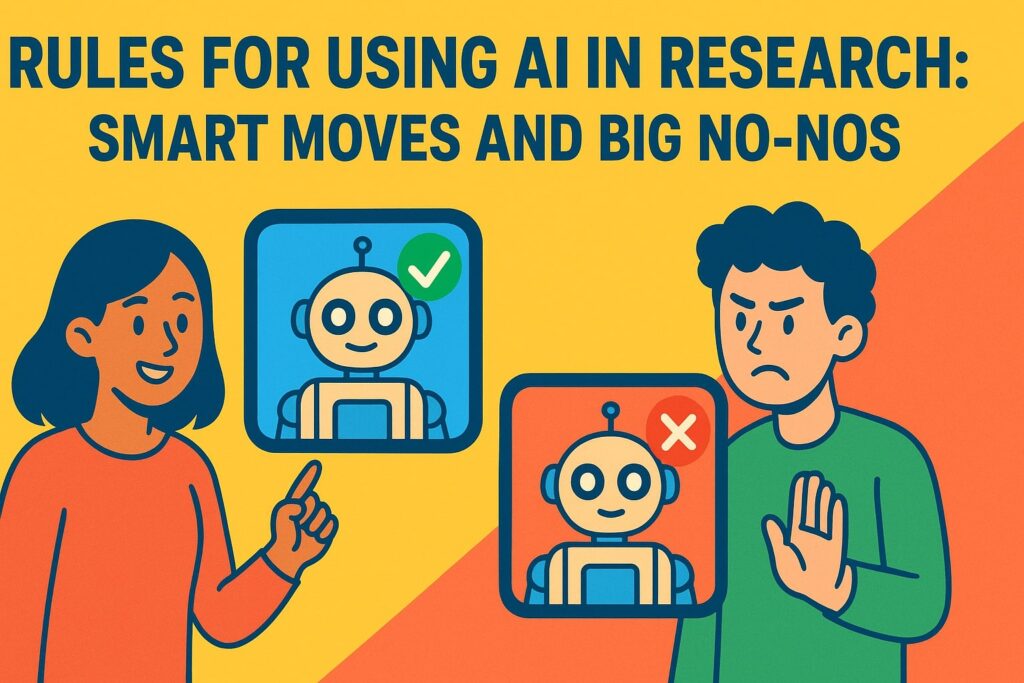
Rules for Using AI in Research: Smart Moves and Big No-Nos
AI tools can speed up research, but they also bring new headaches if we aren’t careful. To keep papers honest, accountable, and high-quality, everyone involved from scientists to funders needs a clear playbook. Here’s a set of simple dos and don’ts that researchers, universities, and journals can follow.
Dos
Be open about the AI you use: When you submit a paper, let the editor and reviewers know how much help the software gave you. Did it write a first draft, spot patterns in data, or polish the language? Being clear builds trust.
Keep the driver’s seat: AI can crunch numbers or suggest sentences, but it doesn’t think. Double-check its work for accuracy, originality, and basic logic. You are still the one responsible for what goes into a final publication.
Let AI handle the boring parts: Use the tool to speed up tedious jobs like formatting or data cleaning, but keep your own brain in gear. Ask questions, question outcomes, and steer the research from beginning to end.
Write down what you did: For others to repeat your study, they need to know exactly which AI version you ran, what settings you picked, and what data you fed it. Jotting down these details saves everyone time later.
Follow the rules your institution sets: Check for updates on how your university or funding body wants AI handled. Stick to their codes on authorship, data honesty, and plagiarism. Rules may change, so stay in the loop.
Tackle bias head-on: AI learns from old data, which may carry hidden biases. Test the tool for skewed results and take steps to correct them. A fair study starts with a careful look at how the tool behaves.
Don’ts (What to Avoid When Using AI in Research)
Be Upfront About AI Help: If an AI tool helped you draft a section of your paper, say so. Passing that text off as written entirely by a human violates the trust readers expect and may even cross an ethical line.
Never Ask AI to Fake Data: Generating false numbers or pretending that an imagined study took place is never acceptable. Doing so counts as scientific misconduct and can get you banned from funding, journals, and even your institution.
Keep Key Calls in Human Hands: Crafting your main hypothesis, unpacking tricky datasets, or making ethical choices cannot be handed off to software. Those steps need the judgment only a trained researcher can offer.
Remember That AI Can Be Wrong: Models can “hallucinate” believable-sounding facts, copy old biases, or simply miscalculate. Trusting those outputs without a sanity check is a shortcut that will come back to haunt you.
Value Human Review Over AI Convenience: Automated checks might catch a typo, but they cannot replace the careful reading of peers and editors who understand your field. Keep the human bite alive in the quality-control chain.
Don’t Play Games with Citation Numbers: Feeding your paper imaginary citations from an AI generator or strategically padding references might look clever today, but it erodes the fairness of the whole research system tomorrow.
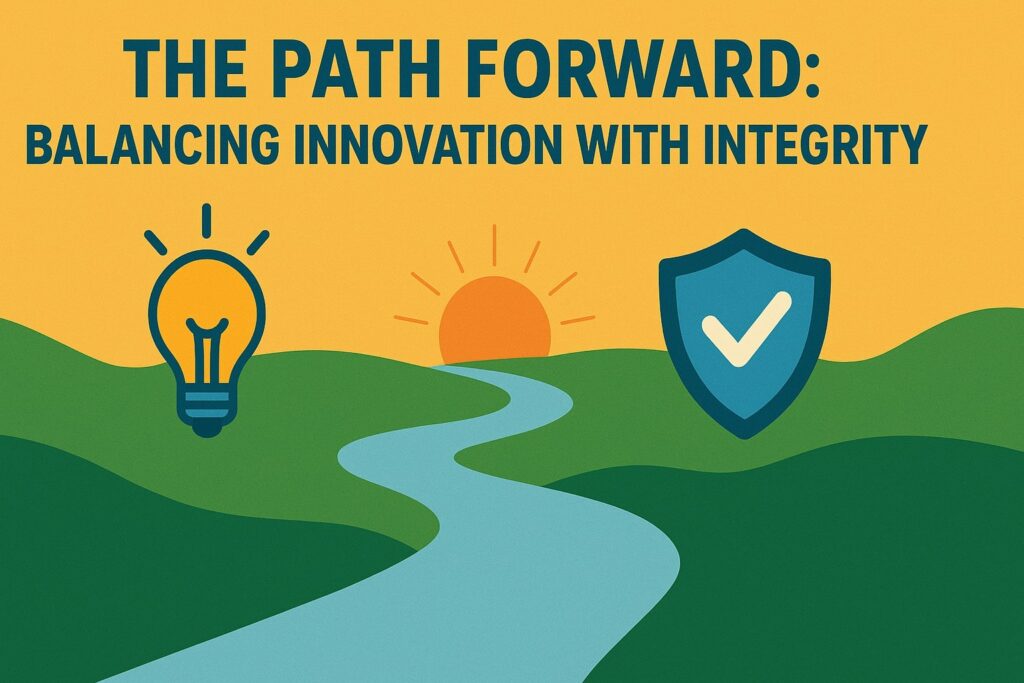
The Path Forward: Balancing Innovation with Integrity
Artificial intelligence isn’t good or bad by itself; the real question is how colleges, labs, and journal editors choose to use or control it.
Clear and Enforceable Guidelines
For research universities and publishing houses to keep things on the straight and narrow, they should:
Require researchers to say when AI has helped them: If a chatbot fixed your language or crunched some numbers, readers deserve to know.
Set rules that say what AI can and can’t do: Fixing typos is fine; writing entire project proposals or crafting experimental questions probably isn’t.
Add AI-checking tools to the peer-review process: Just as we use plagiarism detectors, reviewers should have quick ways to spot content that looks too “machine-generated.”
New Metrics Beyond Citations
Scholars are pushing for fresh ways to measure research, and the conversation is getting serious. First, many agree that we need metrics that reward quality, reproducibility, and real-world impact, not just how many times a paper is cited. Second, blending numbers with human opinion makes sense; qualitative peer reviews can catch what pure stats miss. Finally, everyone is being warned to watch out for shiny new AI bibliometrics that might simply cement old biases instead of breaking new ground.
Education and Skill Building
For these changes to stick, researchers will need the right training. They should learn how to use AI tools with a skeptical eye, asking whether the results are fair and reasonable. Equally important is understanding the limits of machine learning; algorithms can’t replace the nuance a researcher brings to the table. Above all, scholars are encouraged to engage with AI outputs actively checking, questioning, and refining rather than accepting them at face value.
Collaborative Development of Ethical AI Tools
Change won’t happen unless AI developers partner with researchers and ethicists early in the design process. Together they can create transparent, easy-to-interpret systems that amplify human creativity instead of overriding it. Keeping the spotlight on ethics from day one will help curb misuse and manipulation before the tools even leave the lab.
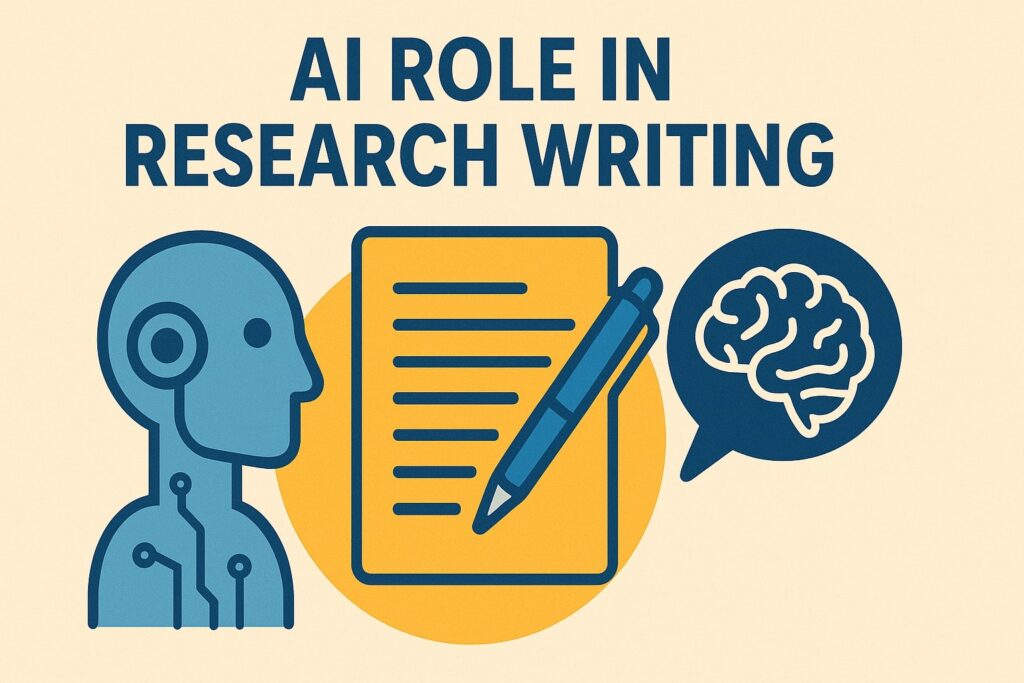
AI’s Role in Research Writing
Modern AI tools including chatbots like this one can help with drafting, summarizing, paraphrasing, or creating text by drawing on the big pool of information we have seen during training.
AI is fantastic for speeding up literature reviews, sketching out ideas, or fixing a stubborn format, but it does not stumble onto new facts by itself.
Whether an AI draft feels authentic is mostly about the prompt you write, the material the system trained on, and how well you fact-check and tighten the result.
Originality and Plagiarism Concerns
Because AI mixes patterns it has learned, the output can look original at a glance.
Still, if users do not review the text closely, the word choices might end up too similar to published papers, creating an accidental plagiarism risk.
Smart researchers treat AI like a powerful assistant: they run the draft through the system, then double-check and rewrite until the voice feels genuinely theirs.
Factual Accuracy and Reliability
AI can “hallucinate,” spitting out convincing-sounding facts or citations that never actually appeared in print.
The model does not check truth; it predicts what words are likely to come next based on what it has seen before.
Because of that, every research paragraph that an AI puts together needs a good round of fact-checking afterward.
Novelty and Creativity
AI is really good at taking bits of information and mixing them together or drawing up rough drafts. What it cannot do, though, is think in a truly creative way or judge a situation for itself.
Big discoveries, outside-the-box ideas, and clear-eyed opinions still come straight out of people’s heads first.
Conclusion: Why Authenticity Matters More than Ever in the Age of AI
AI tools are popping up everywhere in research, and let’s be honest they look amazing. From crunching mountains of data in minutes to spotting patterns no human eye could catch, they promise to save time and open doors we once thought were locked tight. Yet behind those impressive numbers and flashy results, we should never forget that solid science is built on something far simpler: honesty and trust. Rushing to use AI for the sake of speed can easily push real originality onto the sidelines.
If we let AI run wild, papers may end up as glitzy mash-ups where it’s hard to tell who thought of what first. Those shiny metrics can be rigged just as fast as they can be earned. The danger is that we start to doubt the honesty of the next big study, exactly at a moment when solid facts feel more vital than ever.
To make sure AI actually helps rather than harms, the people in labs, reviews, and lecture halls need to face these tough questions together. Only by acting now can we keep science clear, trustworthy, and fair in this brave new digital chapter.
Quick Takeaway
When treated as an extra pair of hands, AI can give a real boost to people writing research papers.
Even the smartest AIs out there still need a human hand before their words go live. Machines can spit out sentences in seconds, but someone still has to look everything over, make sure the facts line up, and add that final touch that keeps readers engaged.
An algorithm might whip up a paper or a blog post, yet it can’t match the spark of imagination or the nose for detail that a real researcher shows. Curiosity, stubborn questioning, and layers of personal insight still belong to people, not programs. That’s why a good editor human or not remains so important whenever tech does the writing.
Read My Publications or visit my LinkedIn


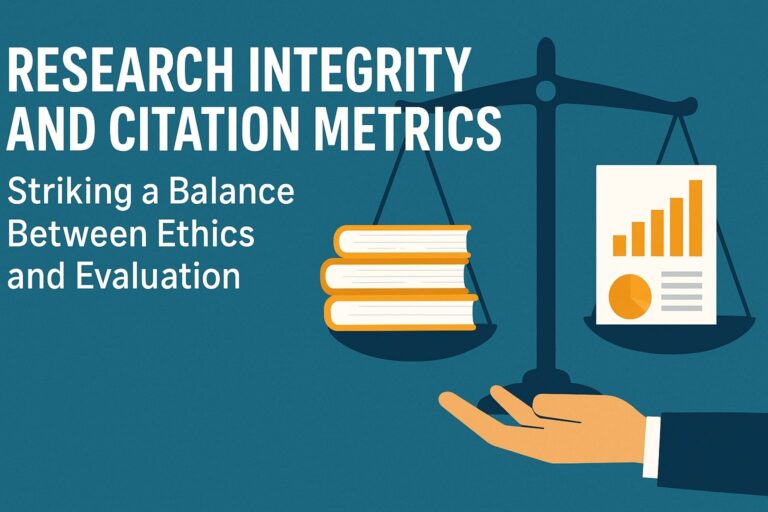
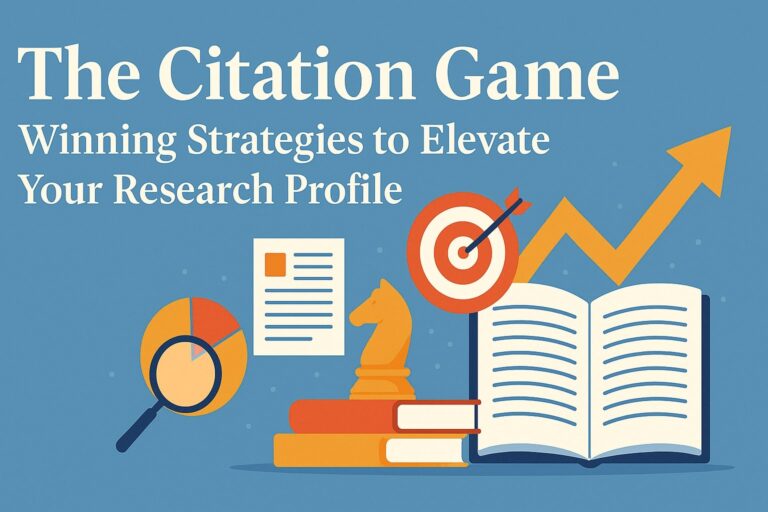
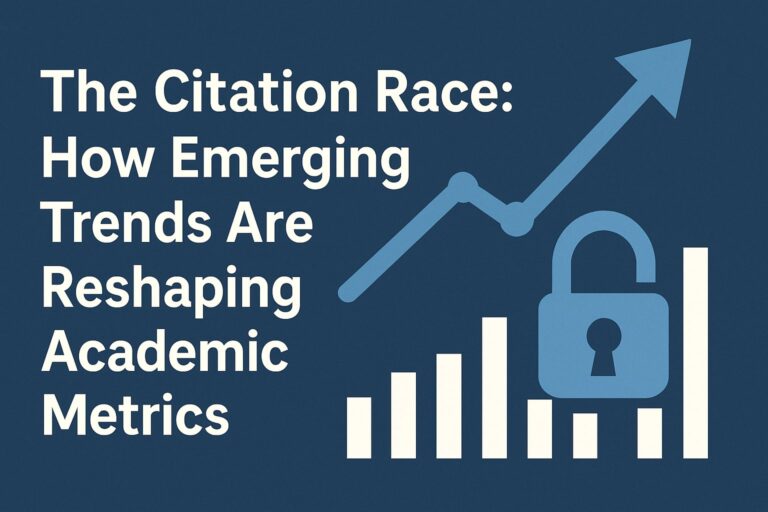
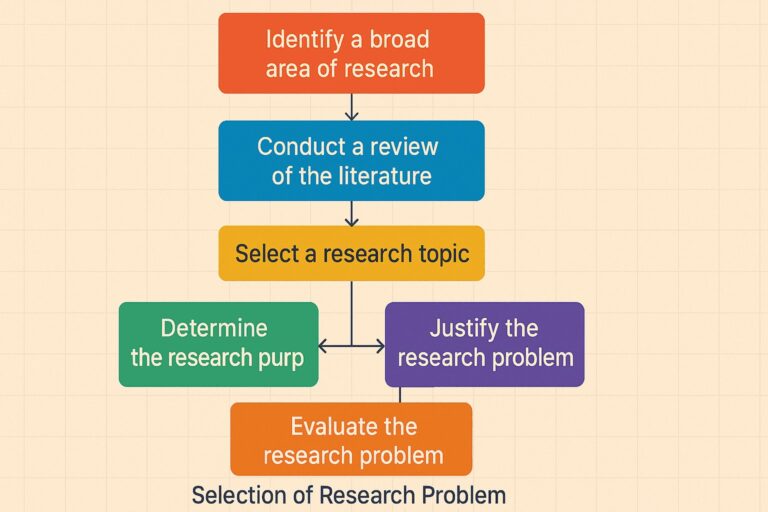
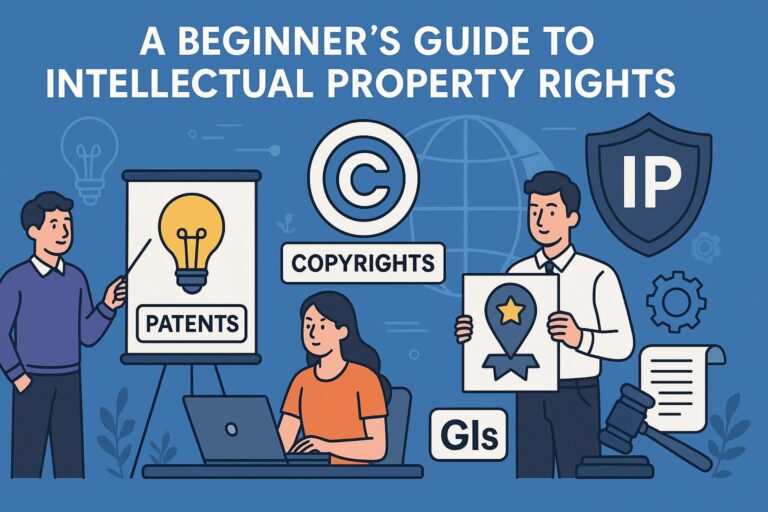
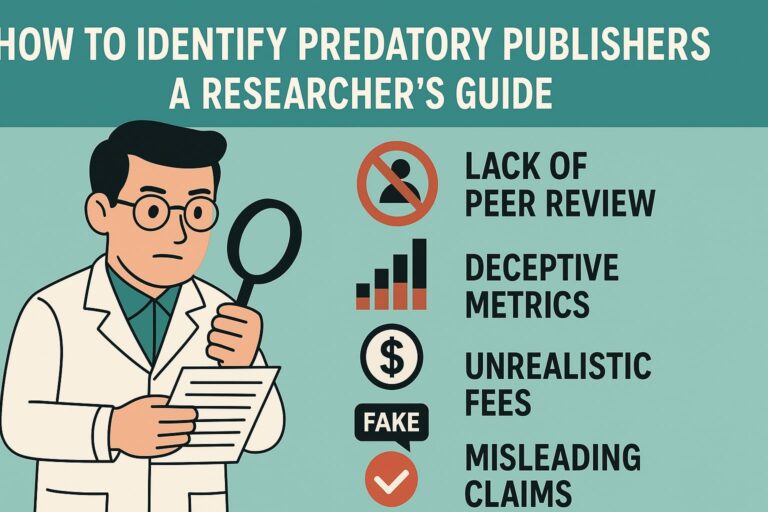
Good thinking about AI in Research:
Authenticity and the Role of AI in Research Publications and Citation Metrics: A Critical Examination (2025)
Insightful….